
Morning Glory Pool
At the northern edge of Yellowstone’s Upper Geyser Basin, where steaming vents rise from a volcanic landscape and wild bison often graze just beyond the boardwalks, lies a hot spring that has captivated visitors for more than a century: Morning Glory Pool. Once famed for its brilliant blue hue and floral appearance, the pool today tells a more complicated story—a blend of beauty, science, and human impact.
The Flower Beneath the Surface
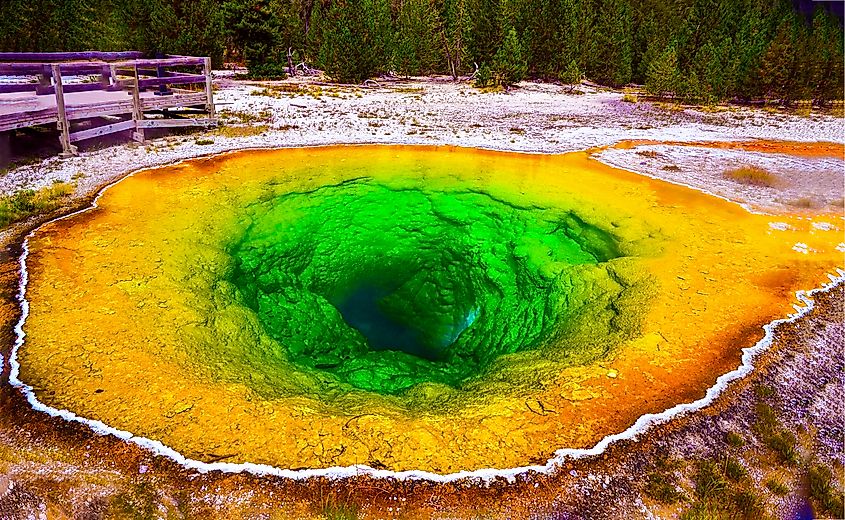
Named in the 1880s for its resemblance to the vibrant blue morning glory flower, this geothermal spring quickly became one of Yellowstone National Park’s most photographed features. Early visitors to the park were mesmerized by its delicate, almost ethereal appearance—a deep blue center rimmed with lighter turquoise, all framed by sinuous curves that mimic flower petals.
Unlike Yellowstone’s explosive geysers, Morning Glory is a hot spring, which means its subterranean plumbing lacks the constrictions needed to produce eruptions. Instead, water in the spring rises gently to the surface, cooling as it circulates and sinks again. This constant motion once kept the pool clear, deep, and vividly blue.
A Wound in the Wilderness
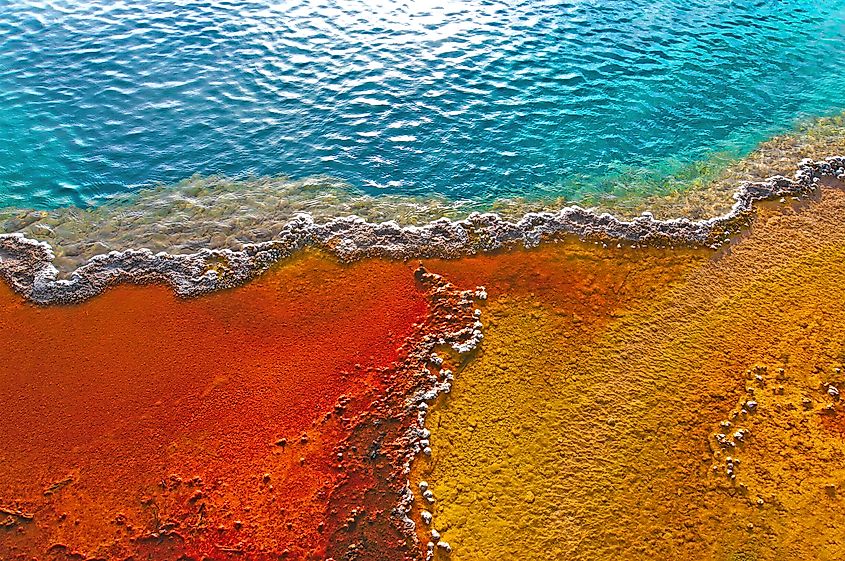
Today, visitors to Morning Glory Pool will notice a dramatic shift in its colors. Where once it glowed a pristine blue, it now displays striking rings of orange, yellow, and green. The transformation is not just natural; it is a direct consequence of decades of human interference.
From the early 20th century through the 1970s, tourists frequently tossed coins, bottles, rocks, and other debris into the spring. In the 1950s, the spring was even dubbed “the garbage can” due to the sheer amount of refuse thrown into its depths. Back then, the park’s road system allowed cars to drive directly alongside the pool, making it an easy stop—and an easy target.
By the time rangers attempted cleanup efforts in the 1970s, thousands of pounds of junk had accumulated at the bottom and along the spring’s vent. This blockage restricted the flow of superheated water, slowly lowering the overall temperature of the spring. The consequences were both chemical and biological.
How Color Tells a Story
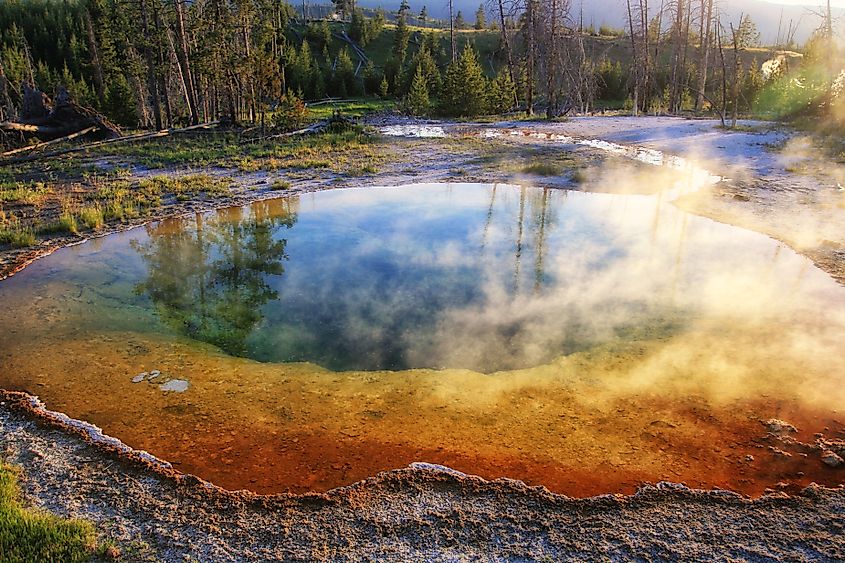
The color palette of a Yellowstone hot spring is more than just eye candy—it’s a scientific readout of microbial life. In the hottest areas, where temperatures exceed 158°F, few thermophilic organisms can survive, and the water appears deep blue. The blue comes not from the microbes, but from the way sunlight is absorbed and scattered by the hot, clear water.
But as temperatures drop, heat-loving microorganisms begin to colonize the edges and surfaces of the spring. These thermophiles form massive communities called microbial mats. Yellow and orange species thrive in slightly cooler conditions, while green mats appear in even lower temperature zones. As Morning Glory cooled, these organisms multiplied—shifting the pool’s color from flower-like blue to a more mottled spectrum.
A Past Not Easily Erased
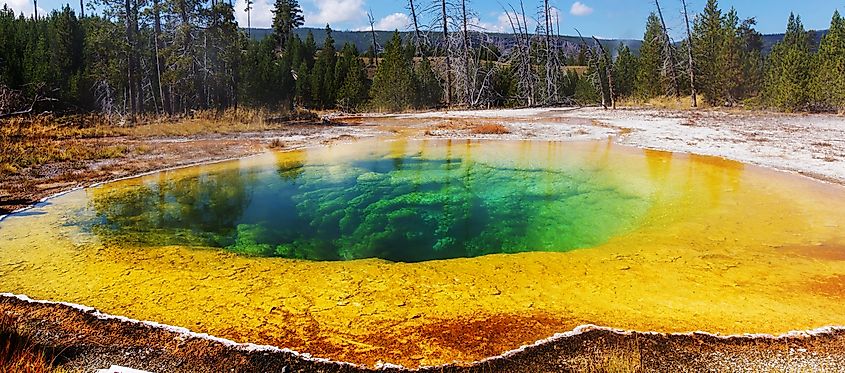
Rangers and scientists have made efforts over the decades to restore Morning Glory to its original state. In the 1970s, they partially drained the pool and removed as much debris as possible, but the damage had already taken hold. Even today, trash continues to be thrown into the spring, despite numerous warning signs and educational efforts.
The persistent nature of this problem was highlighted again in 2018, when a rare eruption at nearby Ear Spring expelled decades-old garbage—including coins, cans, and other artifacts. The event served as a reminder: the geothermal features of Yellowstone are not just delicate, they are deeply interconnected.
There’s no guarantee that Morning Glory Pool will ever regain its original color. The human fingerprint—both intentional and careless—has altered its natural chemistry. But the spring still retains a unique allure, and its vibrant microbial mats are a stunning example of Yellowstone’s hidden complexity.
Inside the Science: Heat and Hydrothermal Dynamics
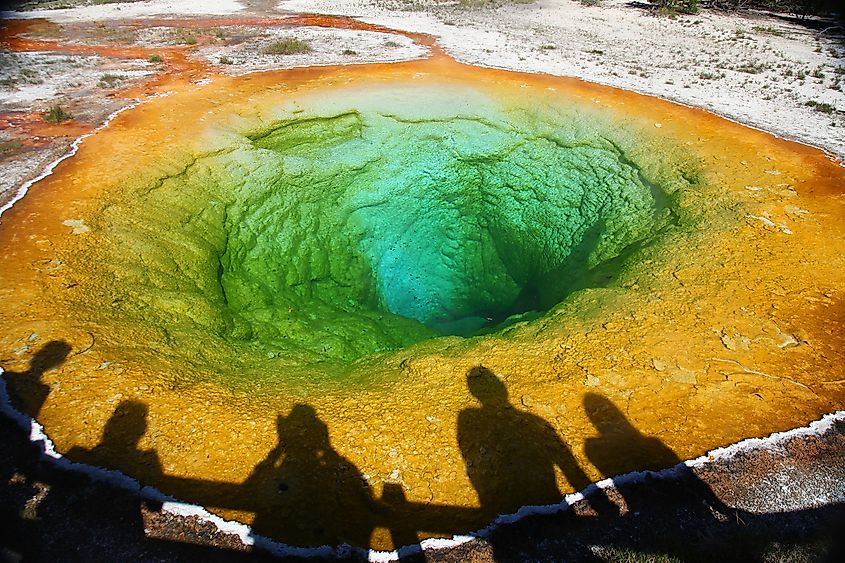
Yellowstone National Park is home to more hydrothermal features than anywhere else on Earth. Of these, hot springs like Morning Glory are the most common. Unlike geysers, which rely on intense underground pressure to erupt, hot springs form where water circulates freely.
Rain and snowmelt seep deep into the earth—sometimes more than 3,000 feet down—where geothermal heat from the Yellowstone supervolcano warms it. The water rises back to the surface through fractures in the rock, carrying minerals and heat along with it. As it nears the surface, the water cools, creating a loop that allows for constant flow. This cycling system is what keeps features like Morning Glory Pool active and visible.
The heat source for all of this lies just 3 to 8 miles below ground, where magma churns beneath the Yellowstone Caldera. This underground cauldron fuels the park’s famous features, including Old Faithful, Grand Prismatic Spring, and the more understated yet deeply symbolic Morning Glory Pool.
Microscopic Life in Extreme Conditions
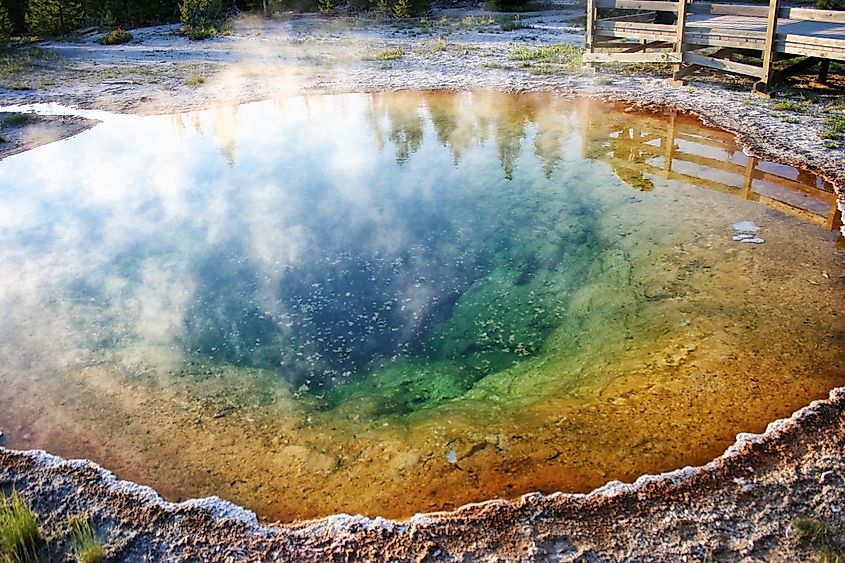
Perhaps the most fascinating chapter in the story of Morning Glory Pool lies at the microscopic level. The organisms that live here, known as thermophiles (“heat lovers”), exist in temperatures that would kill most life forms. Some thrive in nearly boiling water, while others flourish in highly acidic or alkaline environments.
Though invisible to the naked eye, thermophiles group together in such numbers that they create the colorful mats we see in and around hot springs. These living blankets are not just beautiful—they are scientifically significant. Many of Yellowstone’s thermophiles are studied for their potential use in biotechnology, including enzyme research and DNA replication.
Their survival strategies offer clues about life on Earth’s early days—and potentially on other planets. Some scientists believe Yellowstone’s microbial life could mirror the kind of organisms that once thrived in primordial oceans, or that might exist today on Mars or Europa.
A Walk to Remember
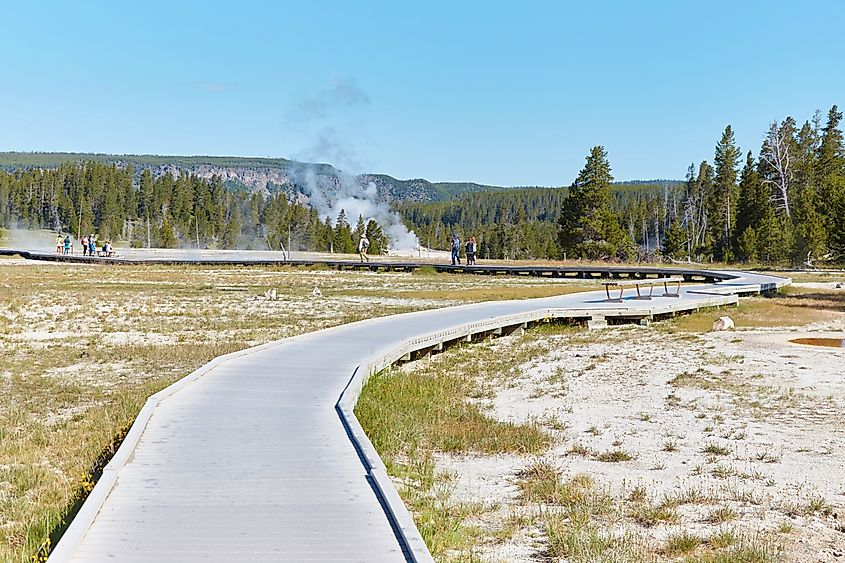
To reach Morning Glory Pool, visitors can take an easy 1.5-mile paved trail from the Old Faithful Visitor Center. The walk weaves through the Upper Geyser Basin, home to more than half of the world’s active geysers. Along the way, you’ll pass bubbling vents, spouting geysers, and mineral-laden pools that seem to glow from within.
Interpretive signs provide context about the geology, biology, and history of the basin, making it a rewarding walk for both science lovers and casual visitors. The final stretch brings you to a wooden boardwalk where Morning Glory Pool quietly simmers—a shimmering reminder of Yellowstone’s beauty and fragility.
Respecting the Resource
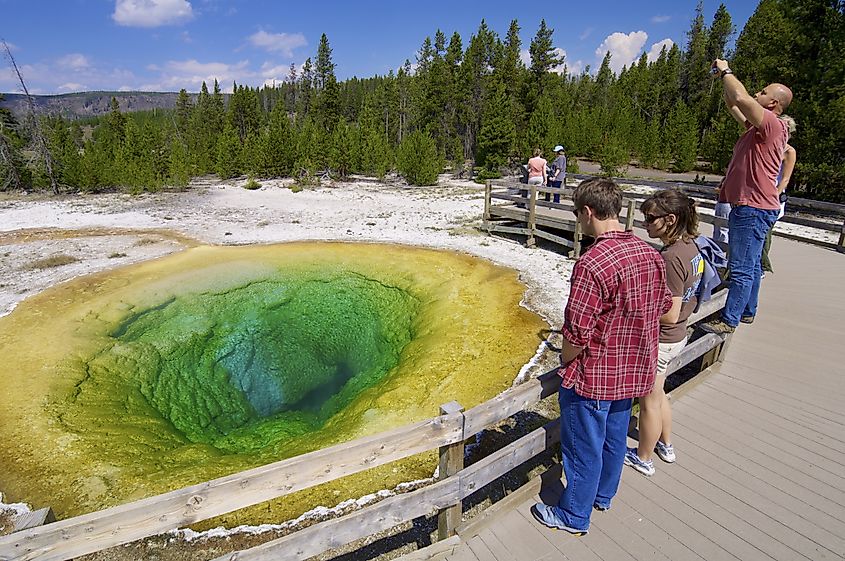
Yellowstone’s hydrothermal areas are dangerous and delicate. Park rangers urge all visitors to stay on boardwalks and designated trails. The ground can be thin and unstable, and hydrothermal water—often heated to near boiling—can cause severe burns or worse.
Equally important is the need for respect. Never toss objects into a hot spring or geyser. Even a small item can alter the chemistry of a feature or cause irreversible damage. Morning Glory Pool is proof that even casual vandalism can leave a lasting mark on a natural wonder.
If you witness any act of vandalism, you’re encouraged to report it to a ranger immediately.
Looking Ahead

Morning Glory Pool may never return to its original hue, but its story is far from over. It continues to be one of Yellowstone’s most visited and discussed landmarks—not just for its beauty, but for what it teaches us about preservation, ecology, and human responsibility.
The spring is a living lab, constantly changing, revealing new patterns in temperature, life, and mineral content. And it stands as a mirror: a place where the impacts of human behavior—both thoughtful and careless—can be read in rings of color.
As Yellowstone moves into a new era of conservation, Morning Glory Pool remains a powerful symbol of how even small actions can shape the fate of our planet’s most extraordinary places.